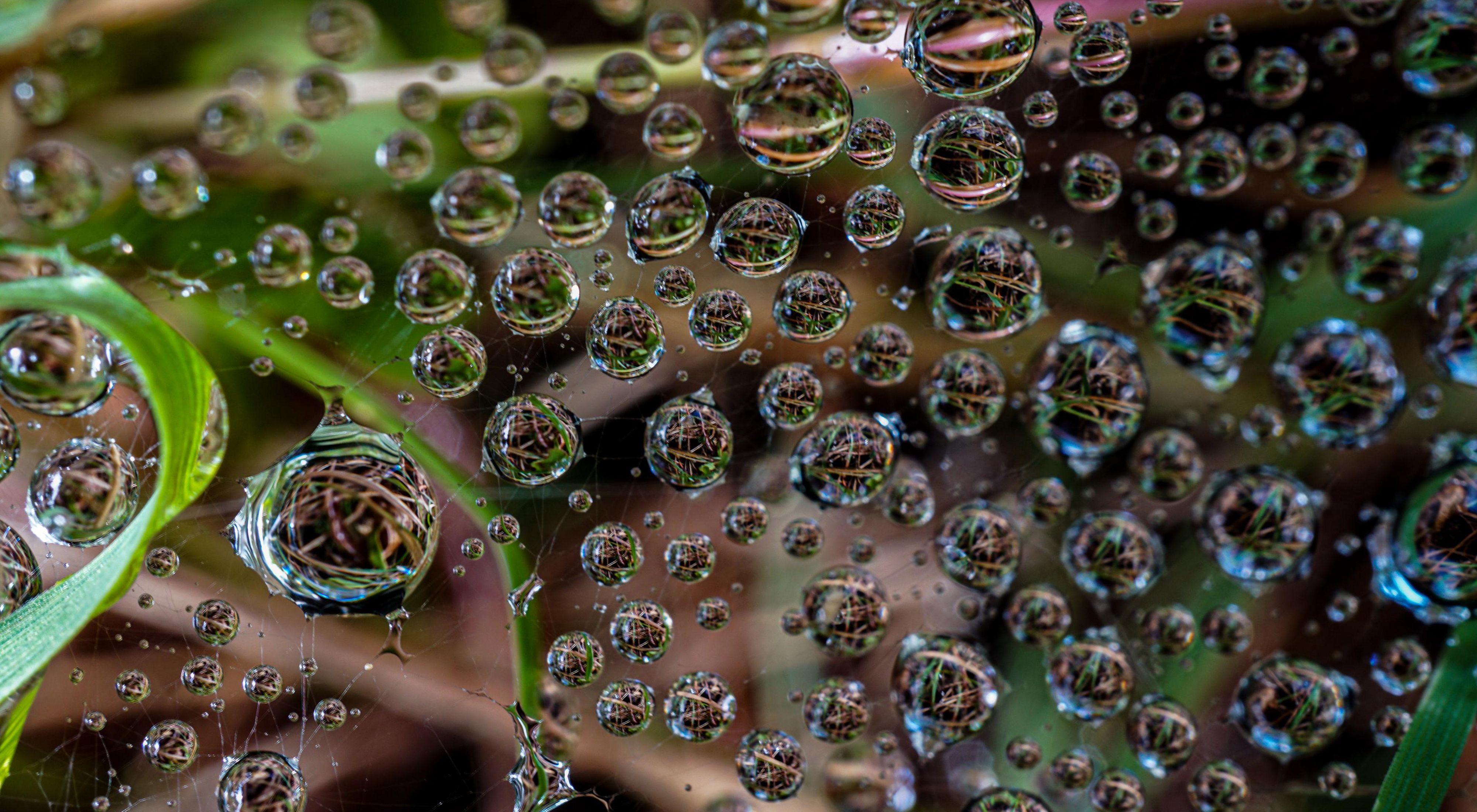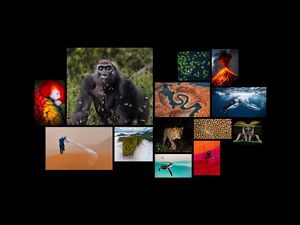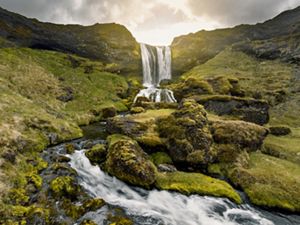Things We Love About Nature—That Aren’t Animals
Animals get lots of love, but there’s so much more to nature than our favorite furry, finned or feathered friends.
It probably comes as no surprise that here at The Nature Conservancy we love nature. And since you’re here, you probably do, too. Most of us have a favorite animal (anyone else love elephants?) or a treasured memory involving animals (perhaps fishing in a local stream or seeing a majestic fox near your home).
And while we might identify more with animals, nature is so much vaster than elephants and blue whales.
Here are some of our favorite things about nature that aren’t animals:
1. Plants
The variety in the plant kingdom is simply astounding. We see this from giant sequoias to tiny duckweed, from ephemeral bluebells to carnivorous Venus flytraps, and even from the many plants we grow for food.
Many of us love plants so much we’ve cultivated miniature jungles inside our homes—plants purify our air, bring brightness and joy, and even reduce stress. They come in every color, size, and shape imaginable and thrive in the most extreme environments (including your kitchen windowsill).
Some smell like death while others smell like (you guessed it) roses. Some bloom underwater, or only at night, or once a decade. Perhaps best of all, every year scientists catalogue new plants!
Photos: Plants We Love
This is just the tip of the iceberg plant.

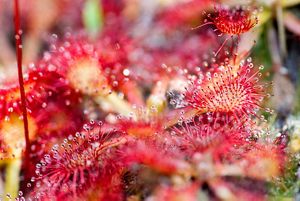
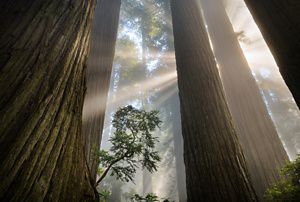


Kelp Forest: View of a kelp forest off the California coast. © Ralph Pace

Sundews: Sundews, which measure no more than 1 inch across, capture insects on their gooey tentacles, Shaken Creek, North Carolina. © Christian Ziegler

Northern CA Redwood Forest: California Forest. California has set a prime example for increasing conservation funding through a cap and trade program that allows for forest offsets. © Patrick McDonald/TNC Photo Contest 2018

Blue cactus: The golden spines of a blue cactus glow in the sunlight. © Salete Silva/TNC Photo Contest 2021
2. Changing Seasons
Part of the beauty of nature is that it’s always changing! The transformation from winter to spring to summer to autumn is celebrated among human cultures the world over.
Even those of us who live closer to the equator can pick up on the subtle cues that the seasons are shifting. Regardless of your favorite season, there’s something to love about each.
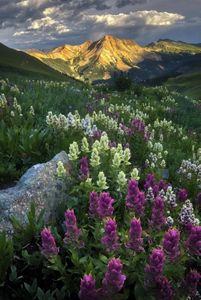
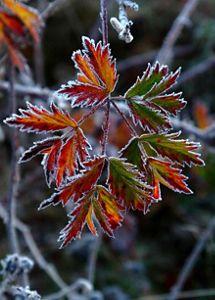
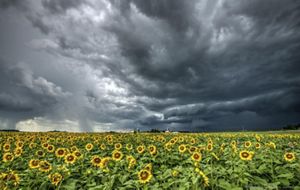
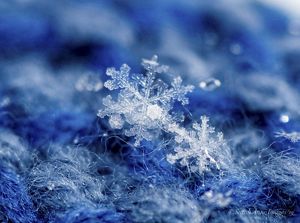
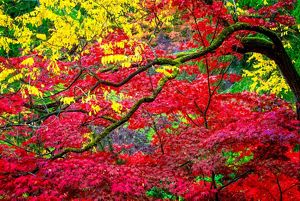
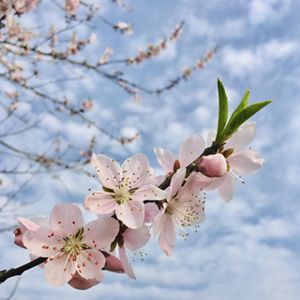

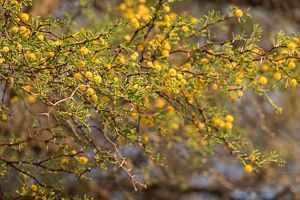

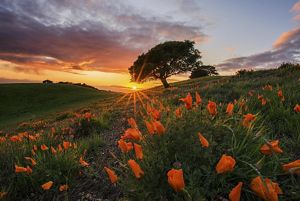

Summer Wildflowers Near Red Mountain: Summer paintbrush wildflowers in a variety of colors above the tree line near the Red Mountains in Colorado. © Gary Ratcliff/TNC Photo Contest 2021

First Frost: Jagged blackberry leaves tipped with glittery frost. © Robin Thompson/TNC Photo Contest 2019

Stormy Sunflowers: A field of sunflowers in Cecil, WI turn to the last moments of sunshine as a summer storm approaches in early August 2019. © Steve Levin/TNC Photo Contest 2019

Crystals of the Sky: The beautiful structure of a frozen snowflake. © Sarah Scheuring/TNC Photo Contest 2019

Colorful autumn: Trees burst with autumn colors. © Weiling Xiao/TNC Photo Contest 2021

Peach Blossom: Peach blossoms burst into life in spring in China. © Li Wang/TNC Photo Contest 2019

Manhattan Skyline: Park-goers enjoy the view at Governors Island in the New York Harbor. © Diane Cook and Len Jenshel

Kalahari Blooms: Blossom on a camel thorn (Vachellia erioloba) in the Kalahari savanna, Namibia. © Patrick Bentley

Stormy Skies: A dramatic sky forms over the ocean on the north coast of São Paulo, Maresias, where storms form quickly, especially in summer. © Gabriel Jurado/TNC Photo Contest 2021

California Spring: Sunset illuminates a field of bright orange poppies. © Jay Huang/TNC Photo Contest 2019
3. Geologic Formations
It should come as no surprise that Planet Earth has some truly incredible earth formations! Shaped by wind, water, glacial movements and tectonic plates, our planet creates a stunning array of terrain.
You’ve heard about—and maybe even visited—the Grand Canyon in Arizona, but what about the Devil’s Tower in Wyoming? Or Giant’s Causeway in Northern Ireland? Or Vinicunca, the rainbow mountain, in Peru? Or the Marble Caves in Chile? Natural wonders, big and small, are everywhere.
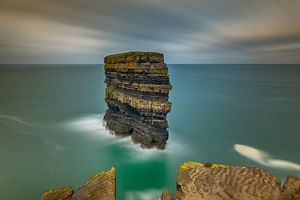
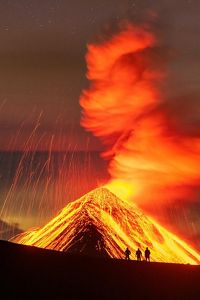
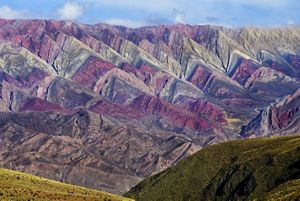
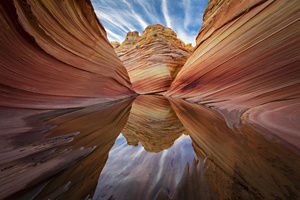
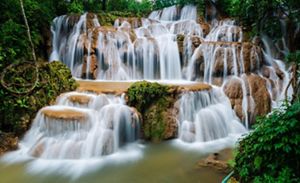
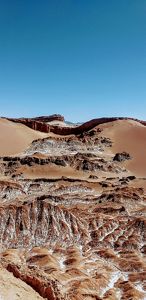
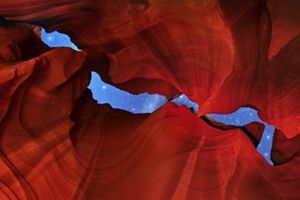
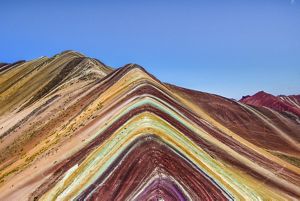

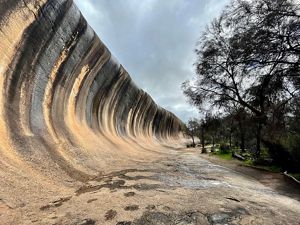

Downpatrick Head: The multilayered sea-stack called Dún Briste rises from the Atlantic Ocean at Downpatrick Head in County Mayo, Ireland. © Todor Tilev/TNC Photo Contest 2021

Volcán de Fuego: Hikers witness a fiery eruption of the Volcán de Fuego in Guatemala. © Christian Hartmann/TNC Photo Contest 2021

Serranía de Hornocal : The shapes and colors of the Serranía de Hornocal mountains in Argentina are breathtaking. © Rosa Contreras/TNC Photo Contest 2019

Desert Reflection: Beautiful curves and striations are reflected in a rare pool of water at the Wave in Arizona, where only 20 people are admitted each day. © Darlene Smith/TNC Photo Contest 2019

Taw Kyal Waterfall: The Taw Kyal Waterfall in Myanmar is one of the area's most spectacular natural wonders. © Swe Tun/TNC Photo Contest 2021

Waterfall, Valley of the Moon: The magic of nature transports us to a world that, at times, can be surreal. Imagine a waterfall in the middle of the Atacama desert, not of water, but of salt. © Israel Miranda Soto/TNC Photo Contest 2021

Starquest: Antelope Canyon at night. © Craig Bill /TNC Photo Contest 2019

Montaña de Colores: The rainbow-patterned mountain rests under a clear blue sky in Peru in July 2017. © Michele Roux/TNC Photo Contest 2019

Angel Falls: A top-down view of the highest waterfall in the world, Argentina. © Laurismar gonzalez/TNC Photo Contest 2021

Wave Rock: Wave Rock, four hours drive from Esperance, Western Australia, is a huge natural rock formation that looks like a giant breaking ocean wave. © Sharni Alexander/TNC Photo Contest 2021
4. Sights, Sounds and Smells
Take in nature through your senses! What do you see, hear, smell, feel, even taste when enjoying nature? You might love the satisfying crunch of a fallen leaf beneath your foot. Or recognize the scent of approaching rain after a dry spell.
You might marvel at the colors in a sunrise or sunset or, if you’re lucky, Aurora Borealis. Or sit quietly and listen to raindrops tapping against leaves or a creek sloshing over rocks—sounds you don’t normally hear in your day-to-day life. Maybe you’ll wake early to welcome the warmth of the sunrise after a chilly night in a tent or study the silent sparkle of new snow blanketing a field. Nature fills our senses.
Photos: Capturing the Senses
"Once you appreciate one of your blessings, one of your senses, your sense of hearing, then you begin to respect the sense of seeing and touching and tasting, you learn to respect all the senses." Maya Angelou
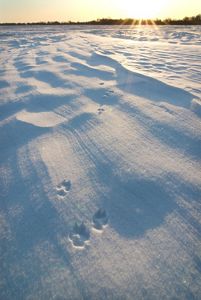
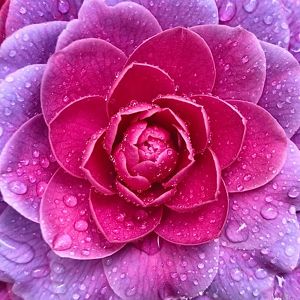
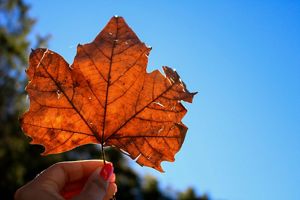
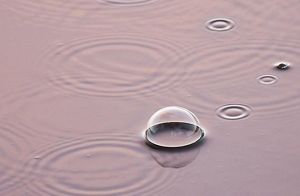

Snowy Tracks: Animal tracks cross wind-sculpted snow drifts at Lincoln Creek Prairie, Aurora, Nebraska. © Chris Helzer/The Nature Conservancy

Camellia: Dewdrops glisten on the first bloom of a pink camellia in Australia. © Sooz Myhill/TNC Photo Contest 2021

Rustic maple leaf: Autumn is on display in São Paulo, Brazil. © Andressa Alvarenga/TNC Photo Contest 2021

Pink bubble not of the champagne kind: Water droplets fall from a tree and form delicate bubbles on the sunrise-pink-tinged Serpentine River in Australia. © Tracy McLean/TNC Photo Contest 2021
5. Textures, Shapes and Patterns
Let the outdoors be your art museum! Pleasing textures and patterns catch our eye and make us feel an intimate connection to our planet. Whether you believe in a higher power or consent to the chaos of the universe, we all powerfully feel the beauty of Earth. Many of us find ways to emulate this natural beauty through art.
As our photo contest fans know, photographing nature allows us to reflect on how we experience nature, what emotions we feel, and why we’re so drawn to certain patterns, colors and shapes in our natural world.
These feelings remind us that we’re not separate from nature—in fact, we’re an essential part.

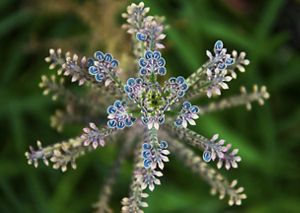




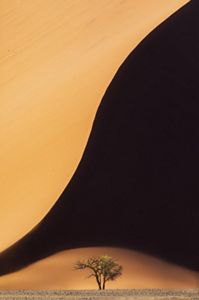
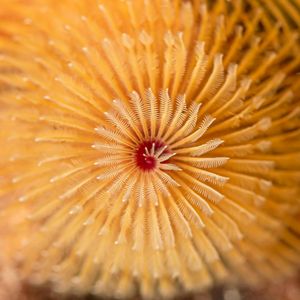
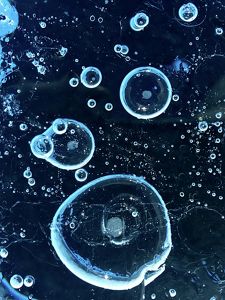
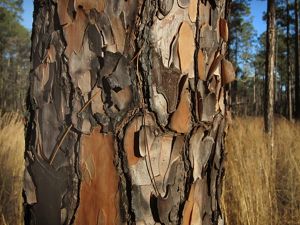

Pink Lake: Drone photo showing the pink hues of a pink lake called Hutt Lagoon, Western Australia. © Leigh Miller/TNC Photo Contest 2019

Mandala : The delicate shapes and patterns of this Argentinian flower are hypnotic. © yolanda cabral/TNC Photo Contest 2019

Trees on the beach: A miniature landscape that looks like trees was created by narrow lines of water on the sand at Digha sea beach of West Bengal, India. © CHINMOY BISWAS/TNC Photo Contest 2021

Death Valley playa: Death Valley's Badwater Basin is the point of the lowest elevation in North America, with salt flats that form an exotic landscape. © Qiang Huang/TNC Photo Contest 2021

Brain coral: This unusual example of the mesmerizing patterns of brain coral was found at Smith's Cove in Grand Cayman, Cayman Islands. © Lindsay McGill/TNC Photo Contest 2021

Twisted Visions: Glacial river flow creates these incredible and unique patterns as it struggles over lava rocks and volcanic ash towards the sea in south Iceland. © David Munro/TNC Photo Contest 2021

Namibian Curves: This simple yet elegant composition shot in Sossusvlei, Namibia, highlights the sometimes abstract beauty of nature that is all around us. © Paul Zizka/TNC Photo Contest 2018

Fibonacci: Nature is perfect. Maybe all the answers that we humans need are there; we only need to observe. This Spirobranchus giganteus is the living proof. © Mizael Palomeque/TNC Photo Contest 2021

Frozen bubbles: These air bubbles were caught in a frozen layer on the top of a glacier as it began to melt. © Jorge Andrés Miraglia/TNC Photo Contest 2021

Bark art: This tree is the perfect canvas for nature's artwork. Taken at TNC's Abita Creek Flatwoods Preserve, north of New Orleans, Louisiana. © Chris Helzer/The Nature Conservancy
6. Persistence
Don’t underestimate the persistence and resilience of nature! Just look at what one seed can do in a place disturbed by a strong storm or human activity.
When we give Mother Nature a chance to recover—or actively help restore her—we can see just how quickly she can go back to her old ways.
The world’s Indigenous Peoples have long stewarded nature through actions that activate its resilience. One is prescribed fire, which restores landscapes that depended on small, frequent fires. Another is regenerative agriculture, which brings life back to the soil and benefits waterways all the way back to oceans.
There are many other ways we can restore nature: We can also plant trees where they’re needed. We can help coral reefs reproduce and grow into strong reefs. And we can help remove invasive species that throw off native ecosystems and biodiversity.
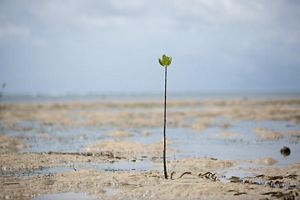
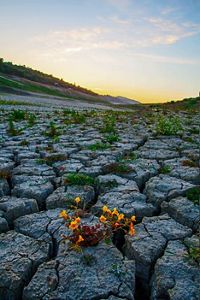
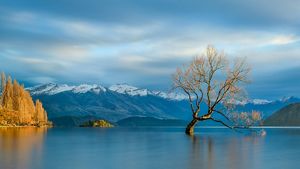
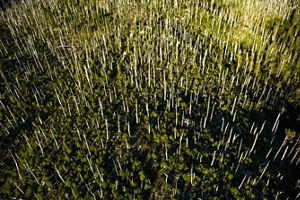

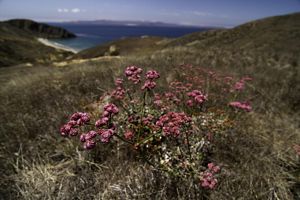
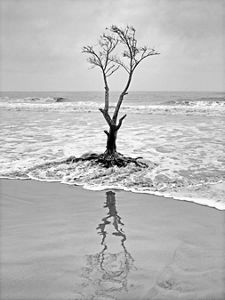

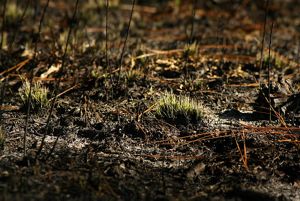


Springing to life: A young red mangrove grows off the coast of Yap, Federated States of Micronesia. © Tim Calver

Vitality: Even in the dry, cracked earth of California, life persists. © ZhuoWen Chen/TNC Photo Contest 2021

El Dorado: A willow tree grows in Lake Wanaka in New Zealand and stands as a symbol of hope for local residents. © David Eliud gil Samaniego/TNC Photo Contest 2021

Resilience: A view over the Alerce Coastal National Park, Chile, where dead, white alerce trunks are scattered among new growth as the forest regenerates. © Nick Hall

Hope: A lone tree in Louisville, Kentucky represents the plight of trees in many urban landscapes and a glimmer of hope for what tree cover can bring to cities. © Randy Olson

A splash of hope: Red Island buckwheat (Erigoneum grande rubescens) blooms amid a dry landscape on Santa Cruz Island, California. © Erika Nortemann/The Nature Conservancy

Survival: A lone mangrove grows along the ocean’s edge on Henry Island in West Bengal. © BIPLAB SIKDAR/TNC Photo Contest 2021

African rainbow: A rain shower over the Serengeti plains produces a rainbow: a sign of hope for a continent that needs water for conservation, and for survival. © Elize Labuschagne /TNC Photo Contest 2019

Rising from the Ashes: Bright green growth emerges in the longleaf pine forest after a controlled burn. © Katherine Blackmore

Find Your Way: High up on the rocky Vermilion Cliffs plateau, a lone tree emerges, resilient and strong, from a sea of undulating sandstone. © Dan Mitler/TNC Photo Contest 2021
More Nature in Your Inbox
Get the best nature stories, news, and opportunities delivered monthly.

